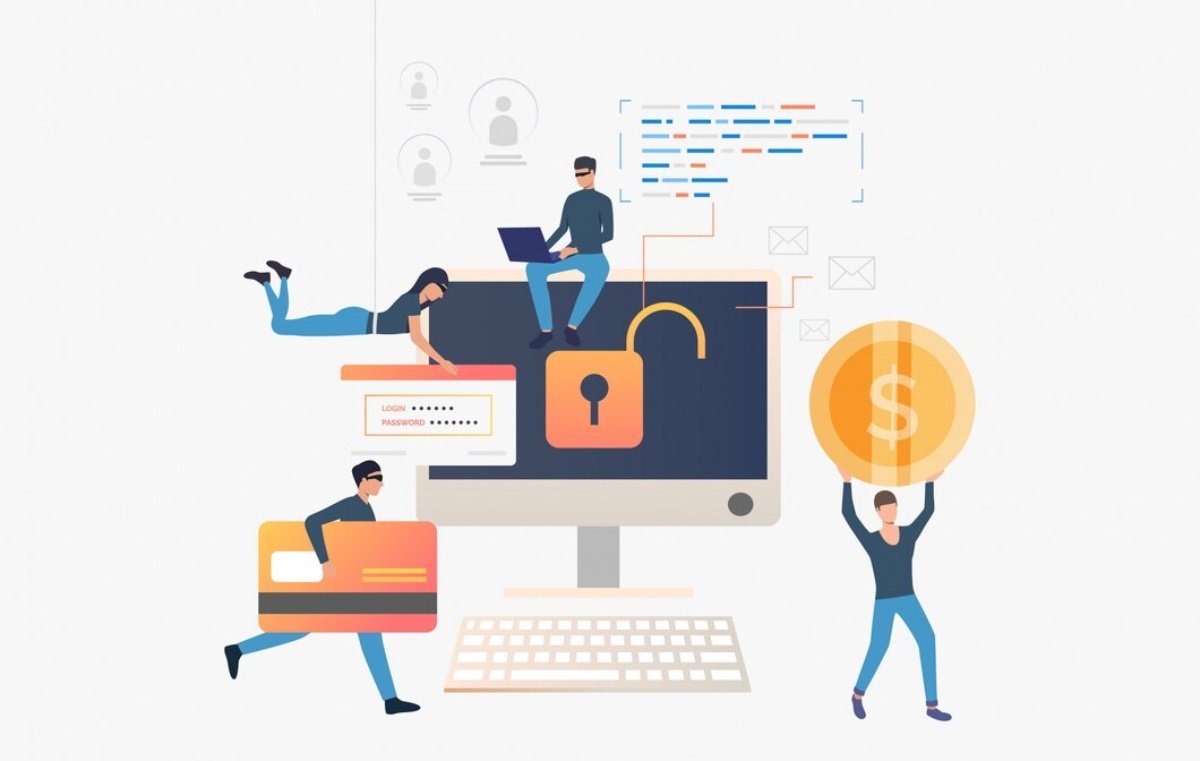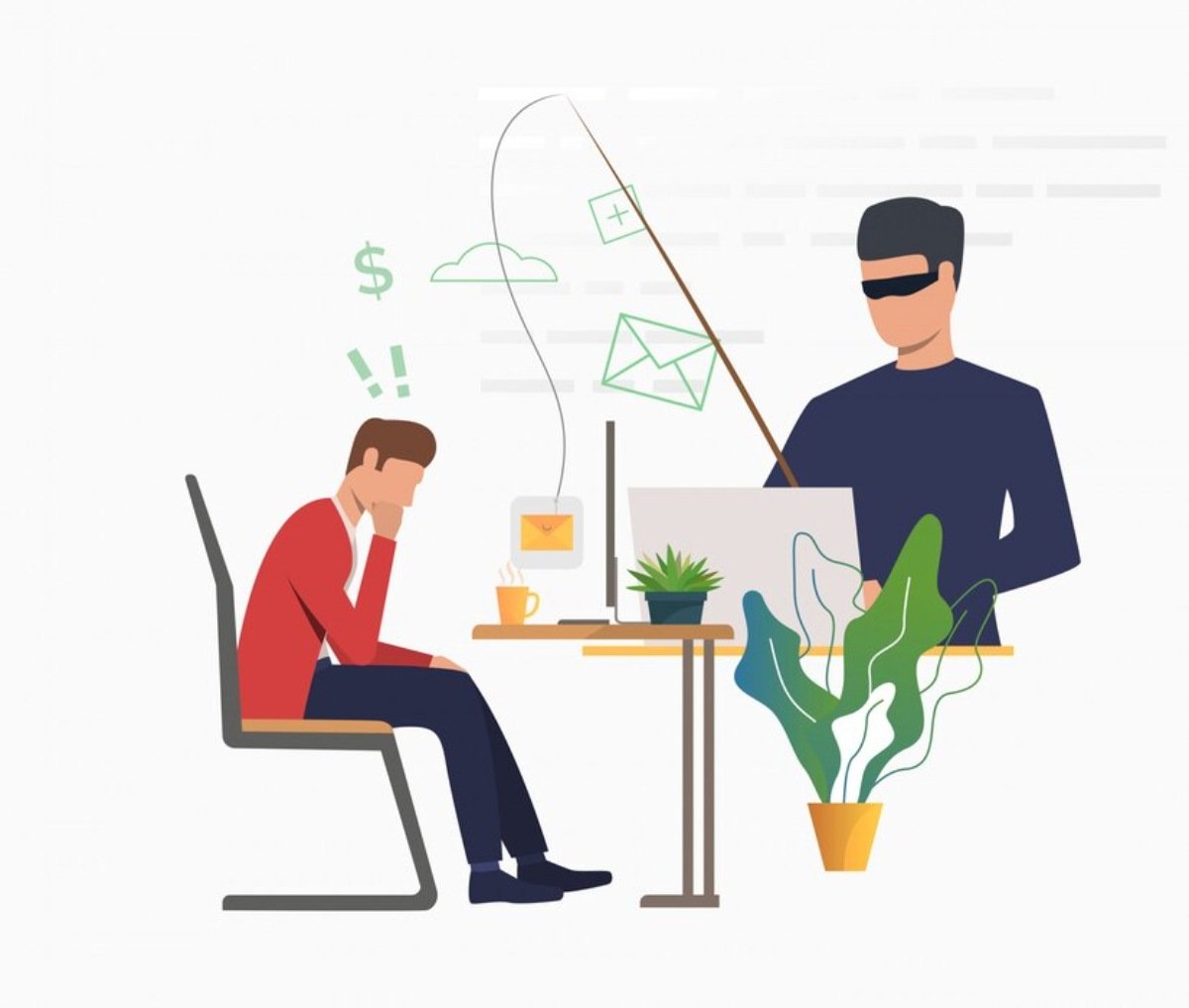
Welcome to our blog, where we will be exploring cybersecurity control – a topic that should attract your attention since more and more cyber threats are arising.
Cybersecurity control is the sort of shield that safeguards your digital castle against the cyber-crooks circling around without suspicion.
Then, the question: What actually is cyber security control? comes up.
Cybersecurity is our primary concern for the blog.
Along the way, we will analyze diverse methods and strategies to control and prevent cyber attacks.
We will explain difficult concepts in terms that are easy for newcomers to comprehend by using words and ideas that have been tailored with cybersecurity control in mind.
Table of Contents
ToggleUnderstanding Cybersecurity Threats

On the Internet these days plenty of friends can be talking to you and who are really lying behind them. Owing to these are cyber threats – cyber criminals – the malicious lurkers of the digital space.
Being able to perceive them is the critical first step toward putting solid cybersecurity control in place.
But fear not!
By having the issue-proof cybersecurity control mechanisms in place, we will be able to counteract the potential dangers facing us.
Cybersecurity awareness, either individually or in a society as a whole includes gaining knowledge about classifications of cyber threats.
Through comprehension of possible vulnerabilities, we can strengthen our position against an attack. So, as we delve deeper into the world of cybersecurity control, remember: he who knows, he rules.
Risk Review and Analysis

As risk assessments and analysis play an important role in our cybersecurity control strategy it is here momentum. This step requires establishing what gaps an attacker might find and use as a basis to bypass the protection of your critical data.
Take stock of digital assets you want to secure and review them in relation to safety, financial data, and the company’s business plans.
In close, with this kind of information you can decide which control method to apply first.
Put the greatest effort into those zones during the initial stage, combat the hazard probability first, and keep the impact when these extreme conditions are as small as possible.
Keep in mind, that cybersecurity controls are not just passive protection measures through which we aim to achieve the desired effect but rather are comprehensive and continuously operating activities to achieve the ultimate goal of mitigating cyber risks.
Cybersecurity Control Policies and Procedures

Now that we have got the challenges, it is time to make some rules and regulations to keep everything protected.
This is exactly the reason that we need strong and organic cybersecurity control policies and procedures, in order to have an impactful and controlled cybersecurity strategy.
Well, it depends on your specific needs and the nature of your digital assets, but some common elements include:
1. Access Control:
Know what information each person had access to and when.
Restricting access to sensitive data will consequently result in the safekeeping of the information from being accessed by an unauthorized person.
2. Data Encryption:
One of the fundamental advantages of encryption is that it makes sensitive information either unreadable or unuseful for any third person who doesn’t have the matching decryption key.
It is equivalent to putting your data in a safe box and lending the key only to the authorized ones.
3. Password Policies:
Implementation of a solid password policy ( e.g., mandatory usage of letters, numbers, and special characters) is very important in the physical accounts of the not unauthorized persons.
4. Device Security:
The best protection for data stored on laptops, smartphones, and other devices is provided with device encryption, and the addition of remote wiping functions.
5. Internet Usage Guidelines:
Providing training on safe online behavior – for example, observing suspicious links and downloads – helps to limit the line of infection for malware and phishing scams.
After establishing your security policies, it is important to tell everyone involved to ensure they’re consistently enforced.
After all, a policy is only effective if people follow it.
Through the process of building up security control policies, you are, in this way, the defining starting point for your cybersecurity effort.
Enforcing Cybersecurity Control
Now we have clear security policies and procedures it’s time to walk through some practical applications of different tools to assist us in the cybersecurity control process.
These technical controls are our digital trusty guards who watch over us 24/7 and provide us with a clean background to trade.
Let’s explore some key technical controls you can implement:
1. Firewalls:
Firewalls can be considered as the “wall” between your private local network and the internet.
Their task is to monitor all data packets going in and out, where they are classified and any suspicious data is blocked.
It is more like an entry guard post which is in front of the digital entry.
2. Antivirus Software:
The antivirus software seeks to prevent malware and remove any virus before it can cause further damage to your computer.
It’s like having a set of digital detection, those figurative cyber canines, who are sniffing out the pursued action.
3. IDS (Intrusion Detection Systems) & IPS (Intrusion Prevention Systems):
IDS and IPS that are deployed on your network, constantly generate traffic and filter it to detect malicious activities and signs of unauthorized entry.
They are able to detect and prevent suspicious online actions in real-time mode to protect Internet users from possible online attacks with no finished damage to their systems.
4. Patch Management:
Updating software and operating systems at all times to the new versions with the latest patches is essential as it closes on security vulnerabilities that are known.
It is as if tightening the first loose bolts of a structure before it becomes weak and undone.
5. Encryption:
Encrypting data that is kept in your storage (in devices and servers) either while at rest or while on the move (being transmitted over networks) is one of the principal ways in which the possibility of someone else reading it even if it falls into the wrong hands is minimized.
This is akin to shuffling your message in a cipher so that only the people with the key can read the message from the code.
This way you’re not just reinforcing protection but adding numerous layers to your virtual barricades, which makes it much more difficult for cyber attackers to go behind defenses.
Therefore, cybersecurity control is about preventing rather than reacting to attacks, and making sure that you are constantly on the offensive against the enemy.
Educating and Training Employees
The cybersecurity control process should not forget that everyone on the digital guard plays an essential role in its defense and that includes each and every employee.
Imagine that each door in your fortress of solitude has different screws to be undone, and the ones who understand them are the only people who can come in since they are the only ones who know the codes.
Hence, like the employees who are aware of the necessary cybersecurity control measures; they emerge as the first institution to fight against cyber-attacks.
1. Cybersecurity Awareness:
First, train employees regarding the various cyber threats they may scarcely educate that might be faced, counting expenditure messages that may distribute their data, malware demands that can infect their systems, and also social construct attacks.
2. Best Practices:
Employees must be trained in internet safety, fraud, and cybersecurity best practices such as using strong passwords, avoiding unsolicited links or files, and checking the veracity of unexpected emails or requests.
3. Simulated Phishing Exercises:
Stake employees’ skills with regard to phishing and their awareness rates of phishing attempts through the conducting of simulated phishing exercises.
4. Regular Training Sessions:
Arrange training sessions frequently to keep employees abreast of the most active cyber threats in order to counter any probable cyber attack.
5. Promoting a Culture of Security:
Create an environment in your organization that supports security, where all members of your crew, from the CEO to the newest recruit, are committed, making cybersecurity control an integral part of their work.
Education and training of your employees not only strengthen cybersecurity control measures but also encourage your team to actively contribute to the safeguarding of the digital tower.
Incident Response and Recovery
In a cat-and-mouse game of cybersecurity control the villains often manage to escape through the defences.
So, let’s delve into the importance of incident response and recovery in our cybersecurity control strategy:
1. Detecting Incidents:
First things first, operators should be aware of their systems and what to do when something does not go as expected.
This could be the information of cipher-based viruses to the disclosure of important data.
Monitoring tool integration and log reoccurrences should help us figure out these incidents at their early onsets.
2. Containing The Damage:
First of all, once a problem is noticed, the procedure that will follow is to confine the damage and prevent it from further spreading.
This can even entail disconnecting the contaminated devices from the network and disabling the compromised account altogether.
3. Eradicating The Threat:
Once the ugly part is averted, one can start digging deep into the invitation of the disastrous event and thus, get rid of it.
It may be to get rid of malware in the suspected infected devices, patching of the security mishaps, or enhancing the access controls.
4. Recovering and Restoring Operations:
Finally, the annihilation of harmful activities brings in the concentration on normalcy acceptance and continues the operation as before.
This could consist of remediations such as restoration of data from backups, repairing broken systems, and establishing more robust systems from the resulting intrusion to be able to prevent further attacks.
5. Learning and Improving:
Now unraveling what went wrong and how to prevent it in the future should be one of our main priorities. Our know-how could be used to address weaknesses in the cybersecurity control measures of our company.
This could be handling the review of events that took place after the incident occurred to see where the problem is and what we can do to improve next time.
A solid cyber event response and recovery plan are the ways through which we can lessen the impacts of cyberattacks and start normal activities faster.
Please note that in cybersecurity control it is not just about the prevention of breaches, but equally important is the way we tackle the aftermath of cyber incidents.
Conclusion
It’s now time to reflect on your cybersecurity control process and to share your thoughts and knowledge with others, empowering them to set up a shield against all cyberthreats.
During the journey we’ve been realising that cybersecurity control is not a process that is completed once but a cycle that continues.
It involves alertness, perseverance, and readiness for well-considered modifications of the cybersecurity systems.
This way we shall stay updated about current threats frequently examine and enforce security procedures in the organisation and invite the employees to become active members of our security team.
Cybersecurity control should be a vital control for all.
You May Like Also:
3 thoughts on “Cybersecurity Control and Prevention Strategies”